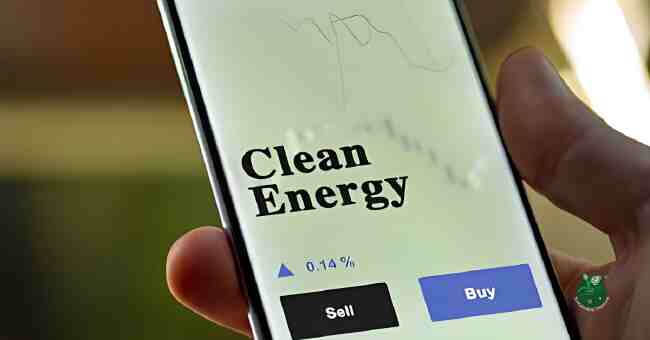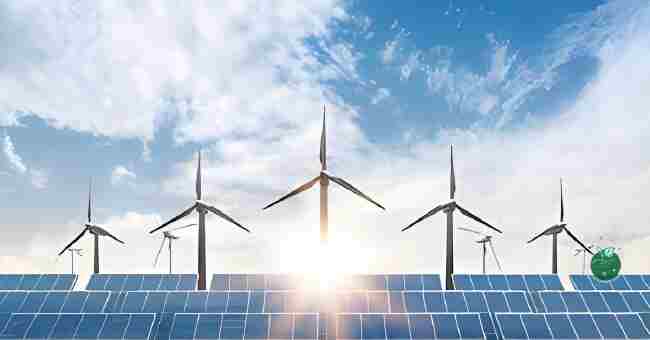Table of Contents
Do you wish to know what is the role of government policies in clean energy investment? Yes, Government policies play a pivotal role in accelerating the transition to clean energy and catalyzing investment in this vital sector.
As a child, I vividly remember the smog-filled skies and my mother’s concerns about air pollution’s impact on our health. Her advocacy instilled in me a deep appreciation for the urgency of embracing sustainable energy solutions.
I promise to elucidate the manifold ways in which well-designed government policies can unlock the full potential of clean energy technologies, safeguarding our planet while driving economic growth and job creation.
Let’s dive in.
What Is Clean Energy and Why Does It Matter?

Clean energy sources like solar, wind, hydroelectric, geothermal, and nuclear power produce far less pollution and greenhouse gas emissions than fossil fuels. Transitioning to clean energy is vital for reducing air pollution, slowing climate change, and ensuring a sustainable future.
Fossil fuels like coal, oil, and natural gas have driven economic progress for over a century. However, their hidden costs in the form of environmental damage and health impacts are becoming too high to bear.
Clean energy investment allows us to power our lives and industries without compromising our children’s tomorrow.
Role of Government Policies in Clean Energy Investment
Here are some ways:
- Job Creation in the Clean Energy Sector
- Tax Incentives to Spur Clean Energy Adoption
- Clean Energy Standards and Portfolio Goals
- Phase-Out of Fossil Fuel Subsidies
- Updating Electricity Grid Infrastructure
- Carbon Pricing Mechanisms Like Cap-and-Trade
- Government Procurement of Clean Technologies
- Public Investment in Clean Energy R&D
- Clean Energy Workforce Training Programs
- Policies Encouraging Sustainable Transportation
- Fostering Clean Tech Manufacturing Hubs
- Energy Efficiency Standards and Retrofits
- Environmental Review and Permitting Reform
- Repowering Fossil Fuel Infrastructure Hubs
- Offshore Wind Development Initiatives
- Equitable Access to Clean Energy Benefits
- Public Education and Outreach Campaigns
- Utility Business Model and Ratemaking Reform
- International Clean Energy Partnerships
Job Creation in the Clean Energy Sector
The renewable energy industry is a major job creation engine. According to a 2022 report, clean energy already employs over 3 million Americans across manufacturing, construction, operations, and other sectors.
| Top Clean Energy Jobs in the U.S. | |
|---|---|
| Solar Photovoltaic Installers | 231,594 |
| Wind Turbine Technicians | 101,738 |
| Low-Impact Hydroelectric | 66,167 |
| Bioenergy/Biomass | 59,621 |
With smart government policies encouraging further investment, millions more good-paying jobs in clean energy could be created in the coming decades across all states.
Tax Incentives to Spur Clean Energy Adoption
One key policy tool is providing tax credits and deductions to households and businesses that invest in renewable energy systems or energy efficiency upgrades. Here are some examples:
- Federal Solar Investment Tax Credit: Allows you to deduct 30% of the cost of installing residential solar systems.
- Electric Vehicle Tax Credits: Up to $7,500 in federal tax credits for purchasing an EV.
- Energy Efficiency Tax Credits: Credits for home energy audits, insulation, windows, heating/cooling upgrades.
These incentives make clean tech more affordable and drive consumer demand. However, they need regular extensions and expansions from Congress to have maximum impact.
Clean Energy Standards and Portfolio Goals
Setting standards and targets pushes utilities and companies to increase clean electricity generation and reduce emissions over time. Examples include:
- Renewable Portfolio Standards (RPS): Legally-binding targets requiring utilities to obtain a minimum percentage of electricity from renewables by a future year.
- Clean Energy Standards (CES): Similar goals including nuclear, hydroelectric, and other zero-emission sources along with wind/solar.
- Vehicle Emissions Standards: Regulating limits on allowable greenhouse gas emissions from cars, trucks, and other vehicles.
When properly designed with achievable interim targets and alternative compliance payments, these standards provide a flexible, market-based approach to accelerating clean energy deployment.
Phase-Out of Fossil Fuel Subsidies
It’s estimated that the U.S. federal government provides over $20 billion annually in direct subsidies and tax breaks to prop up the mature oil, gas, and coal industries. Many view these as distorting free markets in favor of polluting energy sources.
Eliminating or phasing out these subsidies over time would make clean energy more cost-competitive while raising government revenues that could be reinvested in renewable incentives and infrastructure. It would also remove an implicit penalty on producers of clean electricity.
Updating Electricity Grid Infrastructure
Our outdated electrical grid lacks the smart technology and battery storage needed to handle variable renewable sources at scale. Key grid modernization policies:
- Investing in high-voltage transmission lines to carry remote wind/solar to population centers.
- Deploying grid-scale battery systems and incentives for home batteries to store intermittent renewable energy.
- Installing smart meters, sensors, and automated controls to better monitor and regulate power flows.
These upgrades will reduce energy losses, improve grid resilience against disasters, and enable more wind and solar to be integrated reliably.
Carbon Pricing Mechanisms Like Cap-and-Trade
This market-based strategy sets a hard cap on total allowable emissions, with companies receiving tradeable permits for their share. Those exceeding limits must buy extra credits, incentivizing emission reductions.
- Cap lowers over time to drive deeper cuts
- Trading enables most cost-effective reductions
- Raises revenues for clean energy investment
Carbon pricing tackles emissions directly while harnessing market forces, though impacts on energy prices must be carefully managed.
Government Procurement of Clean Technologies
Federal, state, and local governments can use their own purchasing power to create demand and drive down costs for clean technologies like:
- Energy-efficient buildings, appliances, vehicles
- Renewable power systems for facilities
- Advanced nuclear reactor designs
- Carbon capture and storage solutions
Bulk procurement commitments from governments provide key early markets for emerging clean tech, incentivizing private companies to invest for the long-term.
Public Investment in Clean Energy R&D
For transformative breakthroughs in clean tech, continued public investment in research and development is crucial. This has driven innovations like:
- New solar photovoltaic materials and manufacturing processes
- More efficient wind turbine designs
- Next-generation nuclear fission and future fusion reactor concepts
- Improving grid-scale battery storage and green hydrogen storage
- Direct air capture and sequestration of CO2 emissions
Many of today’s clean energy technologies were enabled by past government R&D funding. Robust public research budgets accelerate the pipeline of future innovations.
Clean Energy Workforce Training Programs
Transitioning to a clean energy economy will require training millions of skilled workers in fields like:
- Renewable energy system installation, manufacturing, operations
- Energy auditing, building efficiency retrofits
- Electric vehicle production and maintenance
- Constructing new transmission lines and smart grid projects
Federal and state programs can partner with unions, colleges, private companies, and nonprofits to develop standardized training curricula and certifications.
Policies Encouraging Sustainable Transportation
The transportation sector is one of the biggest sources of air pollution and greenhouse gases. Key government initiatives:
- Tax rebates and infrastructure for electric vehicles
- Investments in public transit systems like light rail, buses
- Requirements and funding for walkable, bike-friendly community design
- Pilot programs for hydrogen fuel-cell vehicles
- Incentives to shift more freight movement to efficient rail
Coordinated policies can rapidly accelerate the turnover to cleaner vehicles and mobility solutions while reducing emissions.
Fostering Clean Tech Manufacturing Hubs
To ensure reliable domestic supply chains and capture the economic benefits, smart manufacturing policies can attract companies making components like:
- Solar photovoltaic cells and panels
- Wind turbine blades and nacelles
- EV batteries and electric motors/drivetrains
- Hydroelectric and geothermal plant equipment
- Nuclear reactor parts and fuel assemblies
Strategies include tax incentives, low-cost financing, streamlined permitting, and investments in technical workforce development. Regional clean energy manufacturing clusters provide jobs and energy security.
Energy Efficiency Standards and Retrofits
Improving energy efficiency is one of the lowest-cost ways to reduce pollution and utility bills. Key policies:
- Minimum efficiency standards for appliances, lighting, buildings
- Tax credits and low-interest loans for home/commercial retrofits
- Incentives for industrial facilities to upgrade inefficient equipment
- Government lead-by-example, greening its own buildings and operations
These reduce energy waste across the residential, commercial and industrial sectors while creating retrofit construction jobs. Standards overcome market barriers to adopting efficient tech.
Environmental Review and Permitting Reform
Despite their benefits, renewable energy projects often face long regulatory delays, increasing costs and stifling investment. Smarter policies can:
- Set firm timelines for environmental reviews and permitting decisions
- Increase staff and resources for reviewing proposed wind/solar farms
- Identify renewable energy zones with expedited approval processes
- Establish objective criteria and mitigation requirements upfront
The key is maintaining environmental protections while avoiding bureaucratic inertia that blocks projects for years. Transparent, timely permitting provides business certainty.
Repowering Fossil Fuel Infrastructure Hubs
Rather than shuttering them entirely, policies can help transition fossil fuel industry hubs into clean energy manufacturing centers by:
- Retraining and recruiting skilled workers into new clean tech jobs
- Incentivizing renewable component factories at old plant sites
- Upgrading port and rail links for moving oversize wind/solar cargo
- Leveraging existing industrial land, buildings and supply chains
With smart policy support, the very same cities, towns and workforces that powered last century’s economy can become rejuvenated clean energy powerhouses.
Offshore Wind Development Initiatives
Offshore wind turbines provide enormous renewable energy potential with minimal land use conflicts. However, jumpstarting this industry requires key policies like:
- Funding for long-term wind resource measurement and mapping
- Maritime workforce training and port infrastructure upgrades
- Navigational risk mitigation and maritime spatial planning
- Outlining lease areas with expedited environmental reviews
Federal and state initiatives are tapping this massive offshore wind resource to bring major new investments and manufacturing to coastal communities.
Equitable Access to Clean Energy Benefits
As the transition advances, policies must ensure clean and affordable energy access for disadvantaged communities:
- Low-income solar installation and community solar programs
- Grants for cleaning up polluted industrial sites for renewables
- Public transportation extensions and EV charging deserts
- Workforce training linked to employers for underserved groups
Combining environmental and economic justice goals creates inclusive opportunities that leave no community behind in the clean energy economy.
Public Education and Outreach Campaigns
Widespread support for clean energy policies hinges on raising awareness of their benefits and dispelling misinformation through initiatives like:
- Advertising the cost-savings of energy efficiency and renewables
- Highlighting local job creation in the clean energy industry
- Teaching STEM curricula on energy technologies in K-12 schools
- Having open houses at solar/wind farms to showcase their impacts
Earned and paid media campaigns amplify understanding and back-up policies with an engaged public.
Utility Business Model and Ratemaking Reform
Electricity providers often face misaligned financial incentives that discourage clean energy sources and energy efficiency. Policy options include:
- “Decoupling” utility profits from energy volumes sold
- Offering rewards and incentives for exceeding clean energy targets
- Enabling distributed generation and customer-owned systems
- Dynamic pricing that encourages load-shifting to reduce peaks
Smart ratemaking reforms realign utility incentives to embrace clean energy as a business opportunity rather than a threat.
International Clean Energy Partnerships
The transition to renewable energy requires coordinated global action. Policy mechanisms like:
- Collaborative R&D on next-gen clean technologies
- Harmonizing standards, codes and certifications
- Sharing best practices in policies and regulations
- Climate finance flows assisting developing economies
Enable the free exchange of innovations, workforces and supply chains across borders to accelerate the clean energy revolution worldwide.
FAQs

What Is The Role Of Government In Promoting Clean Energy?
The government plays a pivotal role in accelerating the transition to clean energy sources through a comprehensive suite of policies and initiatives.
By creating a conducive environment that incentivizes investment, fosters innovation, and addresses market barriers, policymakers can unleash the full potential of clean energy technologies.
One of the primary mechanisms employed by governments is the provision of financial incentives, such as tax credits, rebates, and subsidies, which lower the upfront costs of renewable energy projects and make them more attractive to investors and consumers alike.
Additionally, governments can implement regulatory measures, such as renewable portfolio standards (RPS) and emissions trading schemes, which mandate utilities and industries to incorporate clean energy sources into their energy mix or face penalties for non-compliance.
Why Are Government Policies Important For Clean Energy Investment?
Government policies are crucial for driving clean energy investment as they provide the necessary support and framework to overcome the inherent challenges and market failures that hinder the widespread adoption of clean energy technologies.
Without proactive government intervention, the clean energy sector may struggle to compete with the well-established and heavily subsidized fossil fuel industry.
Stable and long-term government policies offer investors the confidence and certainty they need to make substantial capital investments in clean energy projects, which often have high upfront costs but lower operational expenses over their lifespan.
By creating a level playing field and addressing market distortions, policies can accelerate the deployment of clean energy solutions, reduce greenhouse gas emissions, and foster economic growth through job creation and technological innovation.
What Are Some Examples Of Government Policies That Encourage Clean Energy Investment?
Governments around the world have implemented various policy measures to stimulate clean energy investment. Here are some notable examples:
- Renewable Energy Targets and Mandates: Governments set targets or mandates, such as Renewable Portfolio Standards (RPS), requiring utilities to generate a specified percentage of their electricity from renewable sources by a certain year.
- Feed-in Tariffs (FITs): FITs guarantee a fixed, premium price for renewable energy producers, providing a stable and attractive return on investment for clean energy projects.
- Tax Credits and Incentives: Governments offer tax credits, deductions, or exemptions for individuals and businesses that invest in clean energy technologies, such as solar panels, wind turbines, or energy-efficient appliances.
- Carbon Pricing Mechanisms: Policies like carbon taxes or cap-and-trade systems put a price on greenhouse gas emissions, making fossil fuels more expensive and incentivizing a shift towards cleaner energy sources.
- Research and Development (R&D) Funding: Public investment in R&D helps drive innovation and reduce the costs of clean energy technologies, making them more commercially viable and attractive for private investment.
- Green Banking and Financing Programs: Governments establish dedicated funds, loan guarantees, or green banks to provide low-cost financing options for clean energy projects, reducing investment risks and barriers.
These policy instruments, along with others like streamlined permitting processes, public awareness campaigns, and workforce training initiatives, collectively create an enabling environment that unlocks private capital and accelerates the deployment of clean energy solutions.
How Do Government Policies Impact The Cost Of Clean Energy?
Government policies can significantly impact the cost of clean energy technologies, making them more affordable and competitive with traditional fossil fuel-based energy sources.
By providing financial incentives, such as tax credits, rebates, and subsidies, governments directly reduce the upfront costs of installing clean energy systems like solar panels or wind turbines for homeowners and businesses.
Moreover, policies like renewable energy mandates and carbon pricing mechanisms create a market demand for clean energy, driving economies of scale and technological advancements that further lower costs through increased production volumes and manufacturing efficiencies.
Government funding for research and development (R&D) also plays a crucial role in developing new, more efficient, and cost-effective clean energy technologies, continuously reducing their costs over time.
Additionally, policies that streamline permitting processes, provide regulatory certainty, and offer low-cost financing options for clean energy projects can indirectly lower costs by reducing administrative burdens, mitigating investment risks, and improving access to capital.
By addressing the economic barriers and market failures that have historically disadvantaged clean energy adoption, well-designed government policies can significantly improve the cost competitiveness of clean energy solutions, making them more accessible and accelerating their widespread deployment.
How Can Government Policies Support Clean Energy Job Creation?
Government policies can play a pivotal role in supporting clean energy job creation by fostering a thriving and robust clean energy industry.
Here are some ways in which policies can contribute to job growth in this sector:
- Renewable Energy Targets and Mandates: By setting ambitious targets for renewable energy adoption, governments create a sustained demand for clean energy projects, driving job growth in areas such as manufacturing, construction, installation, and maintenance.
- Financial Incentives and Subsidies: Tax credits, rebates, and subsidies for clean energy technologies and projects incentivize private investment, leading to increased economic activity and job creation across various sectors, including manufacturing, engineering, and skilled trades.
- Workforce Development Programs: Governments can invest in workforce training and education programs specifically tailored to the clean energy industry, ensuring a steady supply of skilled workers to meet the growing demand for jobs in this sector.
- Clean Energy Research and Development (R&D): Public funding for R&D in clean energy technologies fosters innovation, creating new products, services, and business opportunities that drive job growth in emerging fields like energy storage, smart grids, and carbon capture technologies.
- Transition Assistance Programs: By providing support and retraining opportunities for workers in declining fossil fuel industries, governments can facilitate a just transition and ensure that these skilled workers can find employment in the growing clean energy sector.
- Green Infrastructure Investments: Government investments in clean energy infrastructure projects, such as renewable energy installations, transmission line upgrades, and electric vehicle charging networks, directly create construction and maintenance jobs while enabling broader economic growth and job creation in related industries.
By implementing a comprehensive suite of policies that address various aspects of the clean energy industry, governments can unlock significant job creation potential, driving economic growth, and facilitating a just transition towards a sustainable and prosperous clean energy future.
What Role Do Government Policies Play In Promoting Energy Efficiency?
Government policies play a crucial role in promoting energy efficiency, which is a cost-effective and often overlooked strategy for reducing energy consumption, lowering greenhouse gas emissions, and mitigating the impacts of climate change.
Here are some ways in which government policies can drive energy efficiency improvements:
- Building Codes and Appliance Standards: Governments can establish and enforce minimum energy efficiency standards for new buildings, appliances, and equipment, ensuring that new products and structures meet certain performance criteria and reducing energy waste.
- Energy Efficiency Incentives and Rebates: Financial incentives, such as tax credits, rebates, or low-interest loans, can encourage homeowners, businesses, and industries to invest in energy-efficient upgrades, such as insulation, HVAC systems, lighting, and industrial equipment.
- Energy Audits and Benchmarking: Mandatory energy audits and benchmarking programs can identify energy-saving opportunities and track the progress of energy efficiency improvements, providing valuable data for policymakers and building owners.
- Energy Efficiency Resource Standards (EERS): Similar to renewable energy mandates, EERS require utilities to achieve specific energy-saving targets through energy efficiency programs, incentivizing them to promote and facilitate energy efficiency measures.
- Lead by Example: Governments can lead by example by implementing energy efficiency measures in their own buildings, facilities, and vehicle fleets, demonstrating the feasibility and benefits of energy-saving practices.
- Public Awareness and Education Campaigns: By raising public awareness about the economic and environmental benefits of energy efficiency through educational campaigns, governments can encourage behavioral changes and increase demand for energy-efficient products and services.
- Research and Development (R&D): Government funding for R&D can drive innovation in energy-efficient technologies, materials, and processes, enabling continuous improvements and cost reductions in energy-saving solutions.
By leveraging these policy tools and integrating energy efficiency into broader energy and climate strategies, governments can unlock significant energy and cost savings, reduce greenhouse gas emissions, enhance energy security, and create new economic opportunities in the growing energy efficiency industry.
How Can Government Policies Support The Development Of New Clean Energy Technologies?
Government policies play a vital role in supporting the development of new clean energy technologies, which are essential for achieving a sustainable and low-carbon future.
Here are some ways in which policies can foster innovation and accelerate the commercialization of emerging clean energy solutions:
- Research and Development (R&D) Funding: Governments can provide direct funding for basic and applied research in universities, national laboratories, and private companies, driving innovation and addressing the high-risk and capital-intensive nature of clean energy technology development.
- Public-Private Partnerships: By establishing collaborative partnerships between government agencies, research institutions, and private companies, policymakers can leverage complementary expertise, resources, and capabilities to advance clean energy technologies from concept to commercial viability.
- Tax Incentives and Grants: Targeted tax incentives, such as research and development tax credits, and competitive grant programs can incentivize private sector investment in clean energy innovation
Conclusion
In our collective journey towards a sustainable future, harnessing the power of clean energy is an imperative that cannot be overstated.
Throughout this comprehensive exploration, we have delved into the multifaceted role of government policies in stimulating investment, fostering innovation, and overcoming barriers to clean energy adoption.
From financial incentives and regulatory frameworks to public-private partnerships and workforce development initiatives, a cohesive policy approach can propel us towards a low-carbon economy.
As we reflect on the main takeaways, it is crucial to remember the catalytic impact of stable, long-term policies in providing certainty for investors, the importance of addressing market failures through targeted interventions, and the necessity of a just transition that leaves no community behind.
It is time to harness the synergy of public and private efforts, channeling resources towards a clean energy future that safeguards our planet while unlocking new economic opportunities.
The call to action is clear: let us collectively embrace the transformative potential of clean energy and advocate for policies that empower this vital transition.
By doing so, we can forge a path towards a more sustainable, resilient, and prosperous world for generations to come.
Image: Credit Istock



